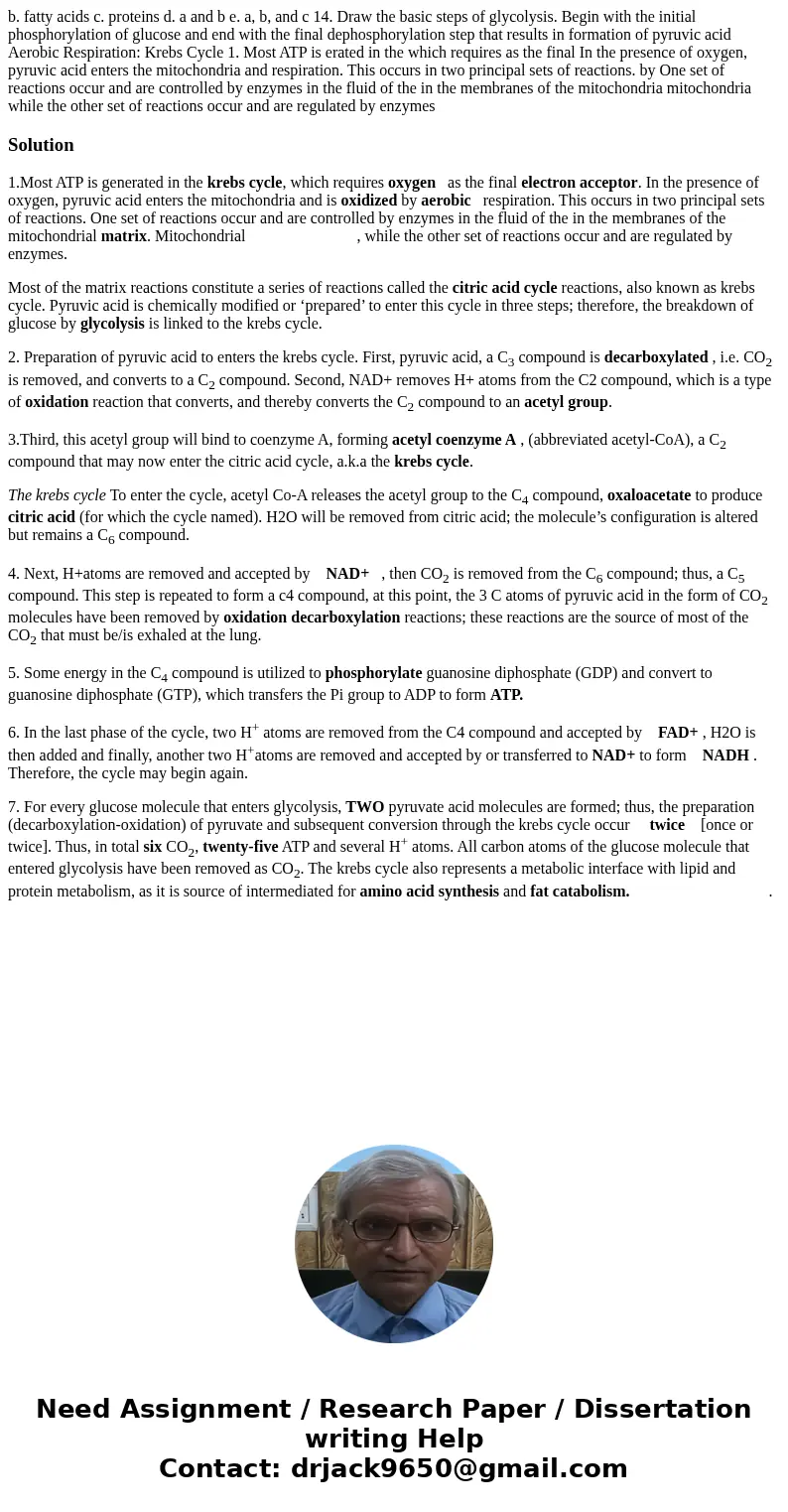b fatty acids c proteins d a and b e a b and c 14 Draw the b
Solution
1.Most ATP is generated in the krebs cycle, which requires oxygen as the final electron acceptor. In the presence of oxygen, pyruvic acid enters the mitochondria and is oxidized by aerobic respiration. This occurs in two principal sets of reactions. One set of reactions occur and are controlled by enzymes in the fluid of the in the membranes of the mitochondrial matrix. Mitochondrial , while the other set of reactions occur and are regulated by enzymes.
Most of the matrix reactions constitute a series of reactions called the citric acid cycle reactions, also known as krebs cycle. Pyruvic acid is chemically modified or ‘prepared’ to enter this cycle in three steps; therefore, the breakdown of glucose by glycolysis is linked to the krebs cycle.
2. Preparation of pyruvic acid to enters the krebs cycle. First, pyruvic acid, a C3 compound is decarboxylated , i.e. CO2 is removed, and converts to a C2 compound. Second, NAD+ removes H+ atoms from the C2 compound, which is a type of oxidation reaction that converts, and thereby converts the C2 compound to an acetyl group.
3.Third, this acetyl group will bind to coenzyme A, forming acetyl coenzyme A , (abbreviated acetyl-CoA), a C2 compound that may now enter the citric acid cycle, a.k.a the krebs cycle.
The krebs cycle To enter the cycle, acetyl Co-A releases the acetyl group to the C4 compound, oxaloacetate to produce citric acid (for which the cycle named). H2O will be removed from citric acid; the molecule’s configuration is altered but remains a C6 compound.
4. Next, H+atoms are removed and accepted by NAD+ , then CO2 is removed from the C6 compound; thus, a C5 compound. This step is repeated to form a c4 compound, at this point, the 3 C atoms of pyruvic acid in the form of CO2 molecules have been removed by oxidation decarboxylation reactions; these reactions are the source of most of the CO2 that must be/is exhaled at the lung.
5. Some energy in the C4 compound is utilized to phosphorylate guanosine diphosphate (GDP) and convert to guanosine diphosphate (GTP), which transfers the Pi group to ADP to form ATP.
6. In the last phase of the cycle, two H+ atoms are removed from the C4 compound and accepted by FAD+ , H2O is then added and finally, another two H+atoms are removed and accepted by or transferred to NAD+ to form NADH . Therefore, the cycle may begin again.
7. For every glucose molecule that enters glycolysis, TWO pyruvate acid molecules are formed; thus, the preparation (decarboxylation-oxidation) of pyruvate and subsequent conversion through the krebs cycle occur twice [once or twice]. Thus, in total six CO2, twenty-five ATP and several H+ atoms. All carbon atoms of the glucose molecule that entered glycolysis have been removed as CO2. The krebs cycle also represents a metabolic interface with lipid and protein metabolism, as it is source of intermediated for amino acid synthesis and fat catabolism. .

 Homework Sourse
Homework Sourse